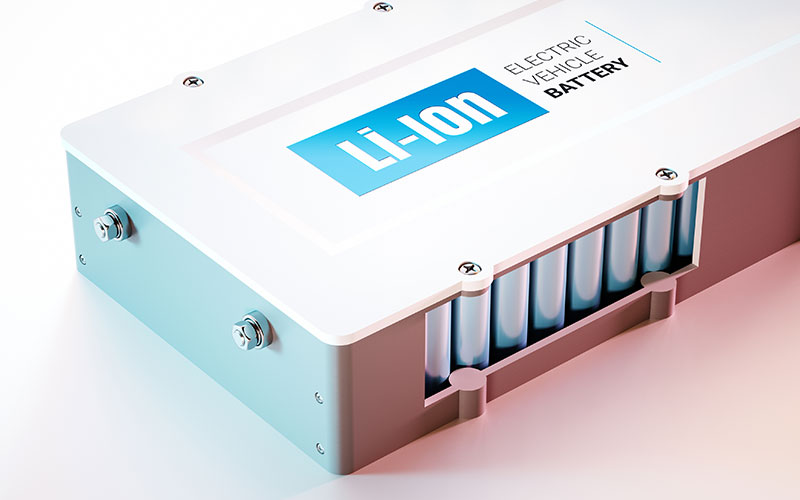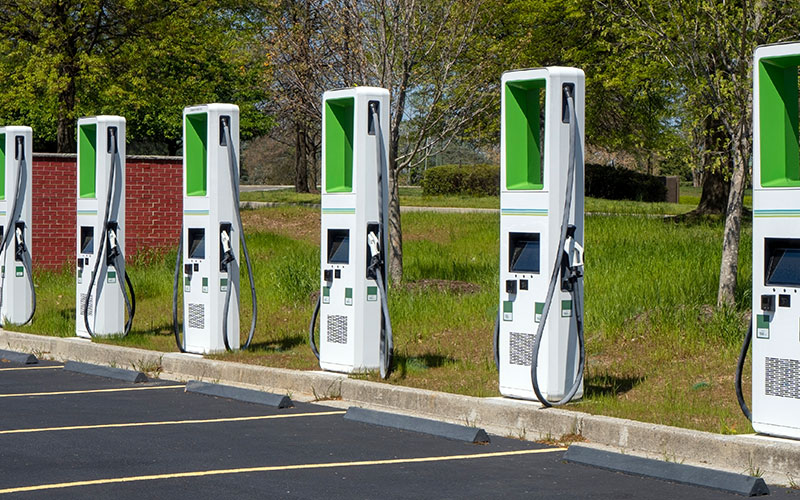Questions of range, charging times, and battery life have been holding back electric vehicle adoption. Can swapping batteries be the solution?
Easing the Transition

The challenges of setting the US transportation sector on a greener and more sustainable path are manifold. As manufacturers pour billions into electric vehicles, major hurdles remain. Chief among them is the reasonable skepticism among consumers about switching from gas to electrically powered cars. While power grid capacity isn’t always top of mind, three other factors of practical concern often are. For consumers those factors are: range anxiety (how far you can travel on a single charge), charging times (as EV currently take considerably longer charge than a gas cars does to fill up), and the life of a car’s battery pack. Battery swapping may just alleviate all three concerns at once.
The bulk of manufactures have focused their EV efforts on the current model of at-home charging and charging infrastructure that resembles the classic gas station pump. But some new start-ups think an alternative method of swapping out battery packs to be far more efficient.
How It Works

Battery swapping in EVs works pretty much like changing out the batteries on your TV remote. Drivers arrive at a swapping station, drive their cars into a stall and a robot removes their depleted battery pack and replaces it with a fully charged one. The entire process takes ten to fifteen minutes.
Why It Matters

Battery swapping addresses those three major hurdles to widespread consumer adoption of EVs. First and perhaps most importantly, battery swapping virtually eliminates “range anxiety” or the limited ranges of most EVs compared to traditional combustion engine vehicles. By swapping every 200-300 miles, battery packs can remain smaller (and weigh less) and drivers can be confident they can make trips with out spending hours at a charging station.
That leads us to the next hurdle, charging times. Currently, the average DC charger takes up to 45 minutes to fully charge an EV’s battery pack. This time is especially troublesome for making the longer interstate journeys that Americans like to make. Though the average commute is less than 12 miles in the US, the majority of car buyers won’t buy a vehicle they aren’t confident in taking on their next cross-country summer road trip. Yes, you can find 250kW fast chargers to help reduce your charging time, but consistently fast charging can reduce the life span of a battery pack.

Which get us to the final hurdle. For anyone who’s owned a high mileage Prius, you’ll know that the most likely killer of your hybrid is a dead battery pack. That same Achilles’s heel is present in all EVs. With currently lithium ion battery technology, today’s EVs can expect around 65,000 miles before their battery pack begins to degrade and slowly lose their charging capacity. Most warranties cover a battery pack up to 100,000 miles, but the fine print often stipulates that they will only replace batteries with less than a 60-70 percent remaining charging capacity (depending on the company). Needless to say, the prospect of having to replace a $3,500-$5,500 battery pack on a ten-year old vehicle is a deal breaker for many car buyers. Continually swapping battery packs as part of a vehicle’s lifecycle completely obviates this cost.
Early Adopters

Tesla and start-up Better Place tried and failed to get battery swapping to catch on nearly a decade ago. Despite approximately $850 million in capital investment, the technology wasn’t scalable at the time and Tesla opted for the more traditional route of one car, one battery.
Flash forward to today, a new San Francisco Bay Area start-up, Ample, has raised over $68 million in venture capital and is looking to make battery swapping the next big thing in EVs all over again. Ample’s edge over prior, fail efforts include speed and efficiency. Their robotics, some seven years in development, can swap battery packs in as few as ten minutes. Their technology is also more efficiency in that it uses multiple smaller battery packs rather than a single large (and interconnected pack). This way, they can swap out as many, or as few, battery packs as necessary.

Ample is already in partnership with Uber, operating five swapping stations in the Bay Area. Their primary focus is fleet operations, delivery vehicles, and taxis and ride-hailing operations. Party this is because any adoption means modifying the current manufacturer technology of an EV. Ample says it’s in talks with five major OEMs for swapping capabilities straight from the factory.
A Proven Concept

Ample isn’t the only company with major investments in battery swapping technology. Over in China, companies like Nio and BAIC already have over 550 battery swapping stations and their own cars. Unlike Ample, which is using retrofitted Nissan Leafs, Kias, and Mercedes, Nio offers its own brand of EVs. In another departure, Nio has focused on private passenger cars rather than fleet vehicles due in no small measure to the wider adoption of EVs in China compared to the US.
Back in 2019, Top Gear (Britain) host Tom Harrison took a Nio ES6 on an 800-mile battery-swapping sojourn from Beijing to Shanghai. Harrison’s one complaint was the swift battery swaps never allowed him much of a break from the frantic Chinese traffic. In practice in China, it looks like battery swapping does indeed put range anxiety to bed.

In a recent op-ed in the Washington Post, Ample vice president for policy and international outreach, Levi Tillemann, argued that the Biden administration’s current multi-trillion dollar infrastructure plan might already be behind the curve by focusing on expanding current modes of EV recharging rather than looking to the future, in Tillemann’s telling, of EV battery swapping. And while Tillemann has an obvious horse in that race, the promises of battery swapping technology are genuinely provocative.









